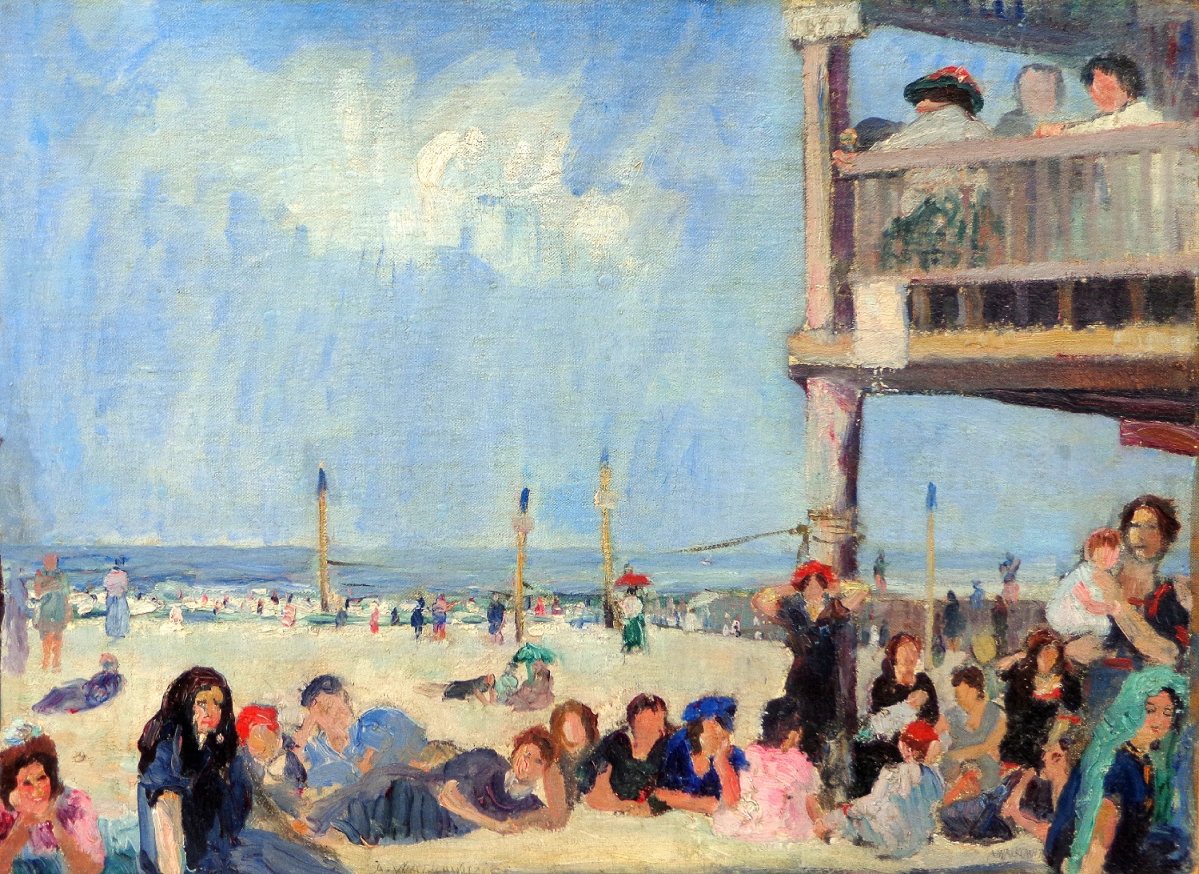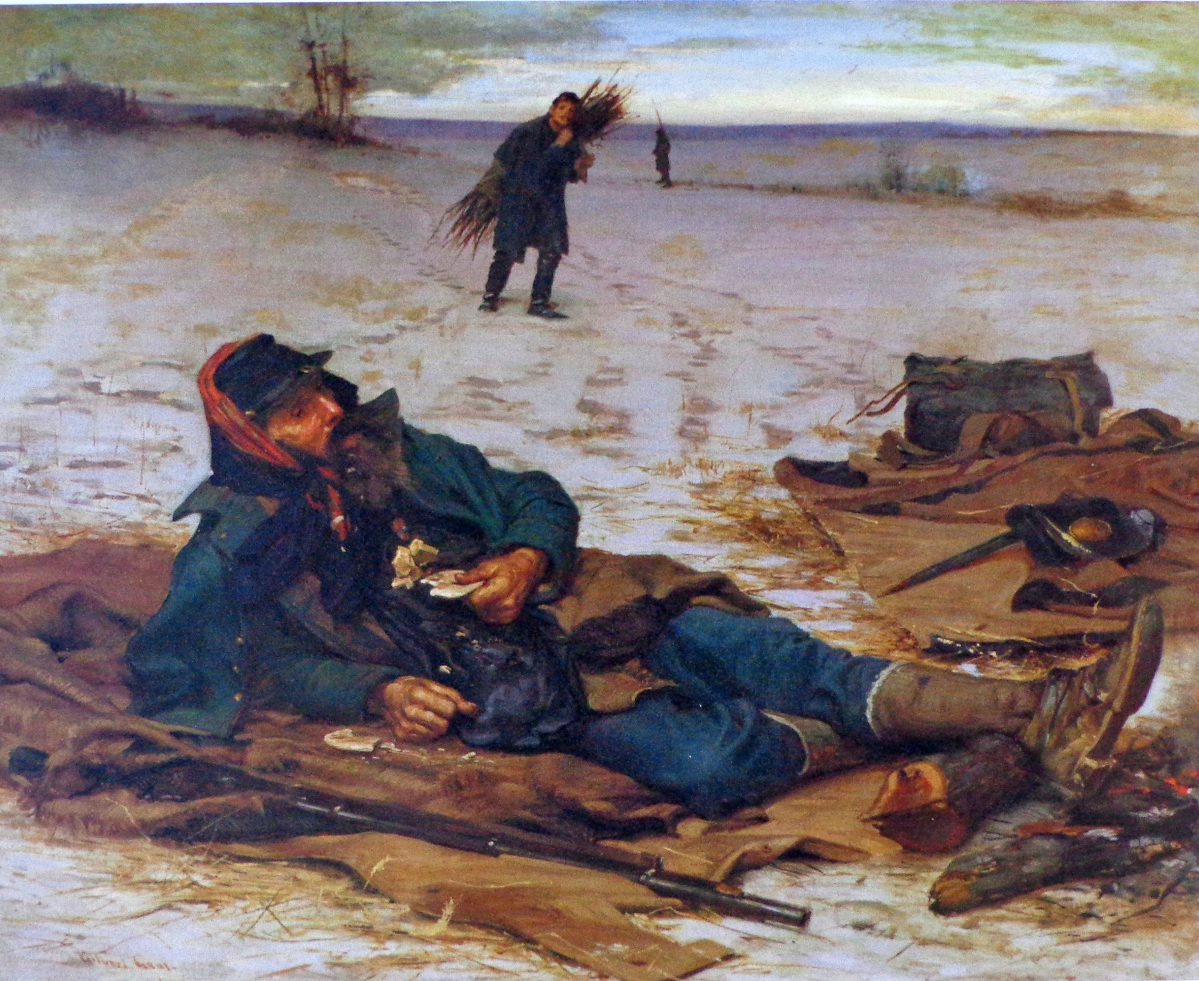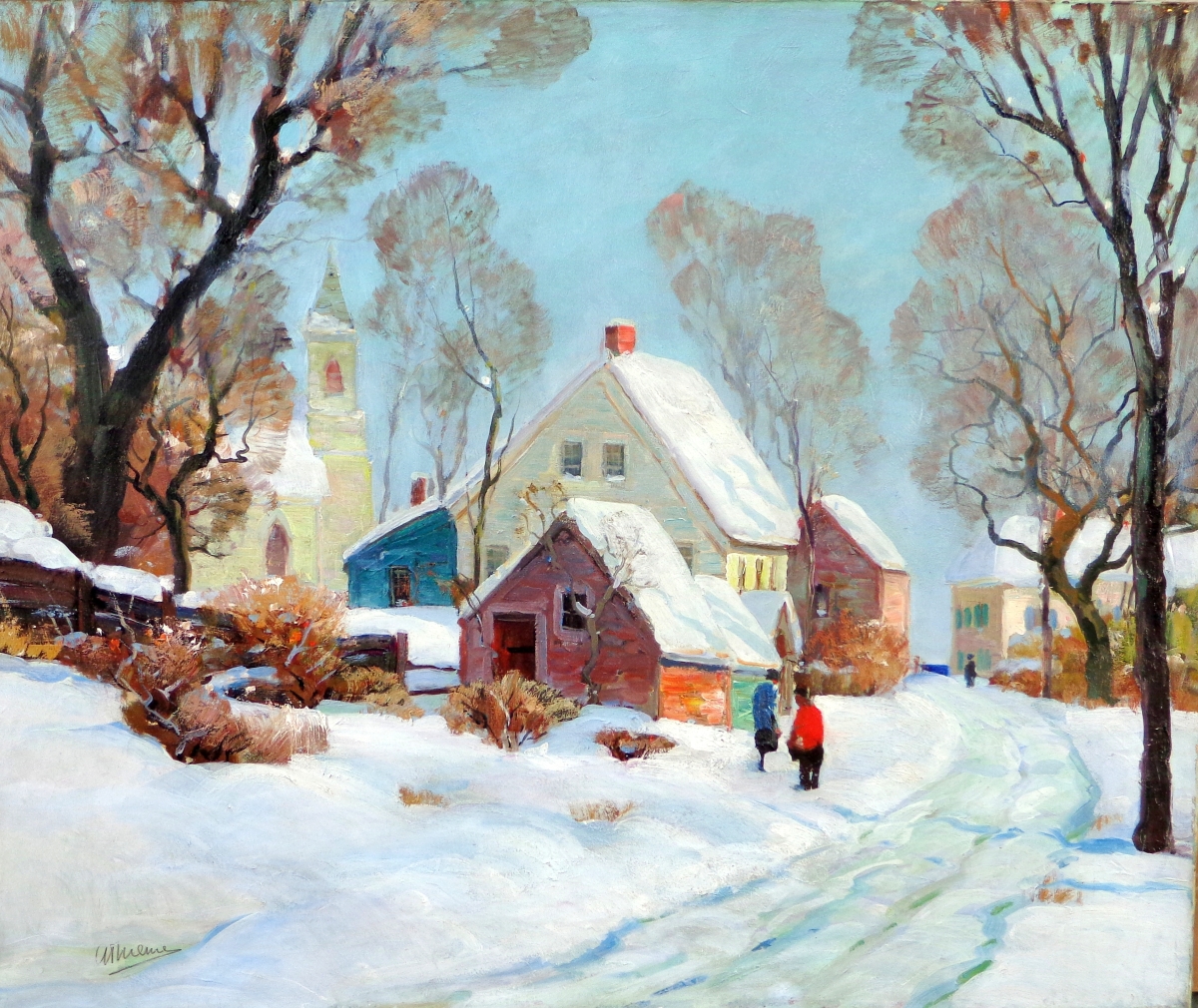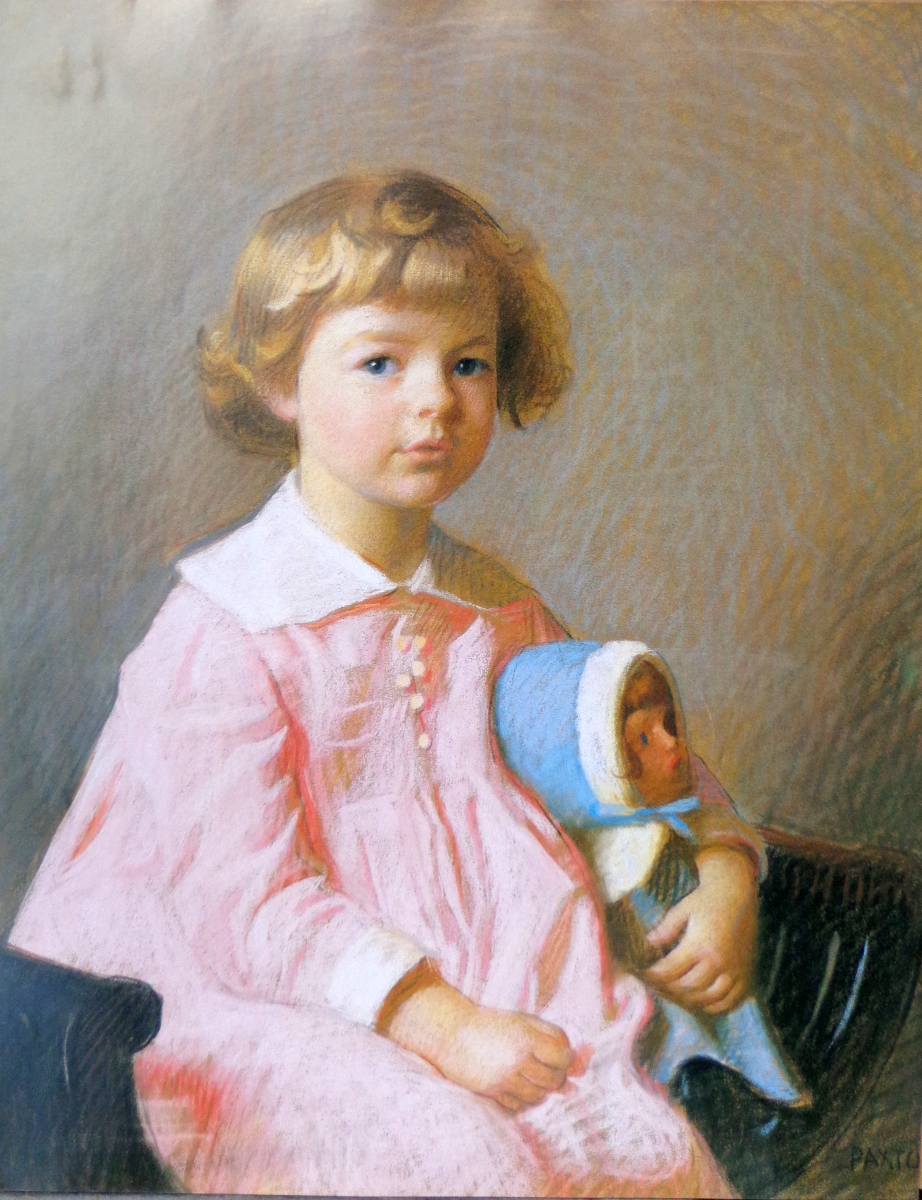By Thomas Davies
NEW CANAAN, CONN. – An ambitious idea is the genesis of the exhibition “Art America – 160 Years in the Making” on display at the New Canaan Historical Society through August 11. The idea was to present the history of representational or academic art in America from the Nineteenth Century Hudson River School until present day. The initial step was to first define time periods, styles of painting, specific subject matter, with a specific focus upon art colonies and the impact of Impressionism. Fifty works of both paintings and bronze sculptures were selected from a major private collection, most of which have not been exhibited before. The challenge was to define one representative example for each topic. In most cases the artists are important and well-documented, such as John Henry Twachtman, Charles Hawthorne, Francis Silva, John Ehninger and Gilbert Gaul
The Nineteenth Century is represented by landscape, genre, still life, marine and history paintings. Artists of this period were instrumental in helping a young nation define its national identity and free itself from the influences of European art. Standouts include Gilbert Gaul’s penetrating image of a Civil War soldier resting in a bleak wintry landscape and warming his feet by a fire, titled “Taking a Break.” Among important still lifes is Baltimore painter Andrew John Henry Way’s composition with a pair of pineapples prominently featured as a powerful symbol of welcome, friendship and hospitality.
Unquestionably, this exhibition focuses most heavily upon Impressionism, which exerted a greater influence on the Twentieth Century than any other art movement. The exhibit captures the expatriate experience of Europe with a major work by George Oberteuffer and also of the Orientalists with Edwin Lord Weeks. Highlights on view include Oberteuffer’s lush painting “Normandy Farm” and Weeks’ “Bombay Snake Charmer,” which brilliantly portrays this uniquely Indian custom.
“Art America” demonstrates the widely varying interpretations of Impressionism by representing 15 different art colonies throughout New England, New York and Pennsylvania. Although subjects and styles of painting often differ from colony to colony, they do tend to share three characteristics: paintable subject matter nearby, access to a large city for gallery representation and potential clients and cheap rent.
A struggle between the old and the new occurred in the largest of the Connecticut art colonies, Old Lyme. The committed Tonalist Henry Ward Ranger first visited Old Lyme in 1899 and proclaimed it ideal as a center for Tonalist art. With the arrival of Childe Hassam in 1903 and later Willard Metcalf, the focus shifted from Tonalism to Impressionism, and ultimately Impressionism dominated the community. The influential artist and teacher Frank Vincent Dumond’s legacy spanned more than 50 years. In the major work titled “Lyme Rock,” Dumond pushed the boundaries of color, while utilizing a controlled, tight style of brushwork.
The Provincetown Art Colony attracted a wide variety of artists, writers and self-proclaimed thinkers. The environment was perfect for the talented 14-year-old John Whorf to abandon formal art school and settle in Provincetown amid the older artists. Whorf earned his “artistic bones” so to speak when John Singer Sargent acquired a piece from his first solo show in Boston, at age 21, which was a sellout. Whorf is represented by a rare large oil of Provincetown Harbor.
Cape Ann’s twin art colonies of Gloucester and Rockport share a working class heritage and thus welcomed all types of artists, professionals and amateurs, traditionalists and modernists. Gloucester is represented by Max Kuehne and a quintessential image of Rocky Neck viewed from Banner Hill and the well-known “Yellow Shed” in the foreground. Anthony Thieme’s winter scene of Jewett Street in Rockport shows his exceptional use of color and lush brushwork, with a nod to history as evinced in a small black dot at the top of the church steeple that is a cannonball fired from a British war ship during the War of 1812.
The dominance of the unrelenting North Atlantic as it pounds Monhegan Island, off the coast of Maine, is captured by Frederick Waugh in a deeply brooding composition, while Woodstock, N.Y.’s art colony is represented by Frank Swift Chase’s large autumn landscape, probably from a series of “Four Seasons.”
The New Hope Art Colony embodies the rugged pioneer spirit of Impressionist landscape painters working plein air, frequently in severe weather conditions, as seen in an important snowscape by Arthur Meltzer, “Milkweed in Winter.”
Among urban subjects are Alfred Mira’s major image of Herald Square and the El painted in 1936 under the auspices of the WPA Program and New Yorkers on Coney Island Beach seeking relief from city life, painted by lifelong Modernist Abraham Walkowitz.
Portraiture, or the effort by a painter to achieve an acceptable likeness of a sitter, probably precedes the earliest art school. Itinerant, self-taught artists traveled town to town seeking portrait commissions. Charles Hawthorne’s subjects were not the wealthy or high society; they were the sea captains, fishermen and wives of Provincetown’s working families. His compelling image of “Miss Wilson” might appear to be high fashion, yet she is starkly plain, absent jewelry and makeup, while the porcelainlike quality of her skin tone is the real beauty Hawthorne strives to capture.
Rounding out the exhibition is the American West, as seen in an early Herman Herzog of the Upper Yosemite Falls painted in 1874 capturing the grandeur of the landscape, and the imagery and dignity of the Native Americans portrayed by John Hauser’s single-figure composition “Comrade of the Plains,” 1905.
Represented among the “Golden Age of Illustration” is Dean Cornwell with two major works: one commissioned by Colgate-Palmolive for a print ad for Palmolive Soap in 1925 having an Orientalist theme, and the latter, a dramatic image titled “The Road to Damascus” that illustrated a story in Good Housekeeping in 1926.
The New Canaan Historical Society is at 13 Oenoke Ridge Road. For additional information, www.nchistory.org or 203-966-1776.
New Canaan resident Thomas Davies, who has been collecting these artworks for more than 40 years and wrote a book on his collection, curated this exhibit.


























